There are around 400 350 North Atlantic right whales remaining, and they’re dying by ship strike and fishing gear entanglement faster than they can reproduce.
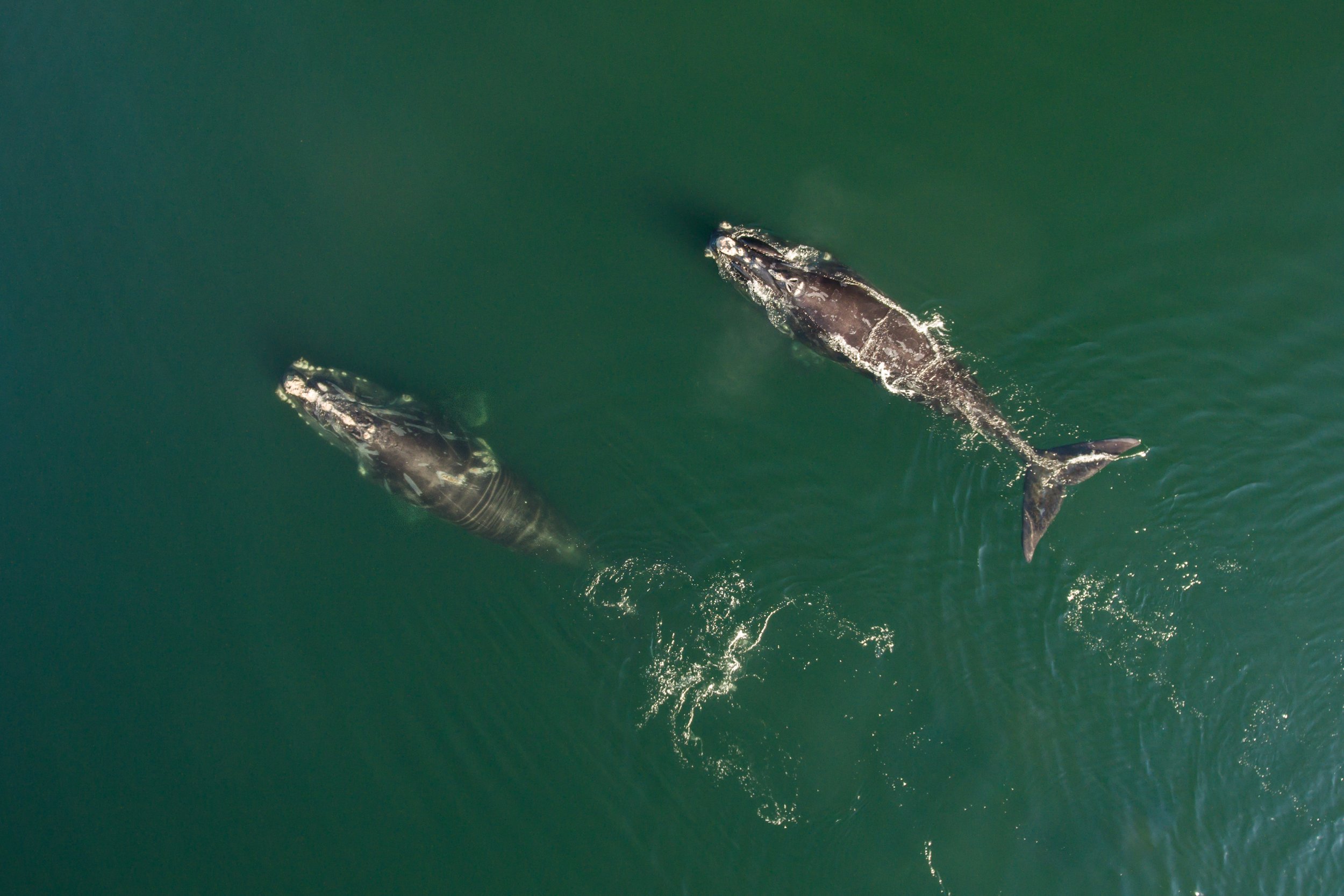
Two North Atlantic right whales feed (Eubalaena glacialis) in the rich, green waters of the Bay of Fundy, New Brunswick, Canada. North Atlantic right whale migrate thousands of miles from southern wintering grounds to feed in rich northern waters of the Atlantic Ocean.
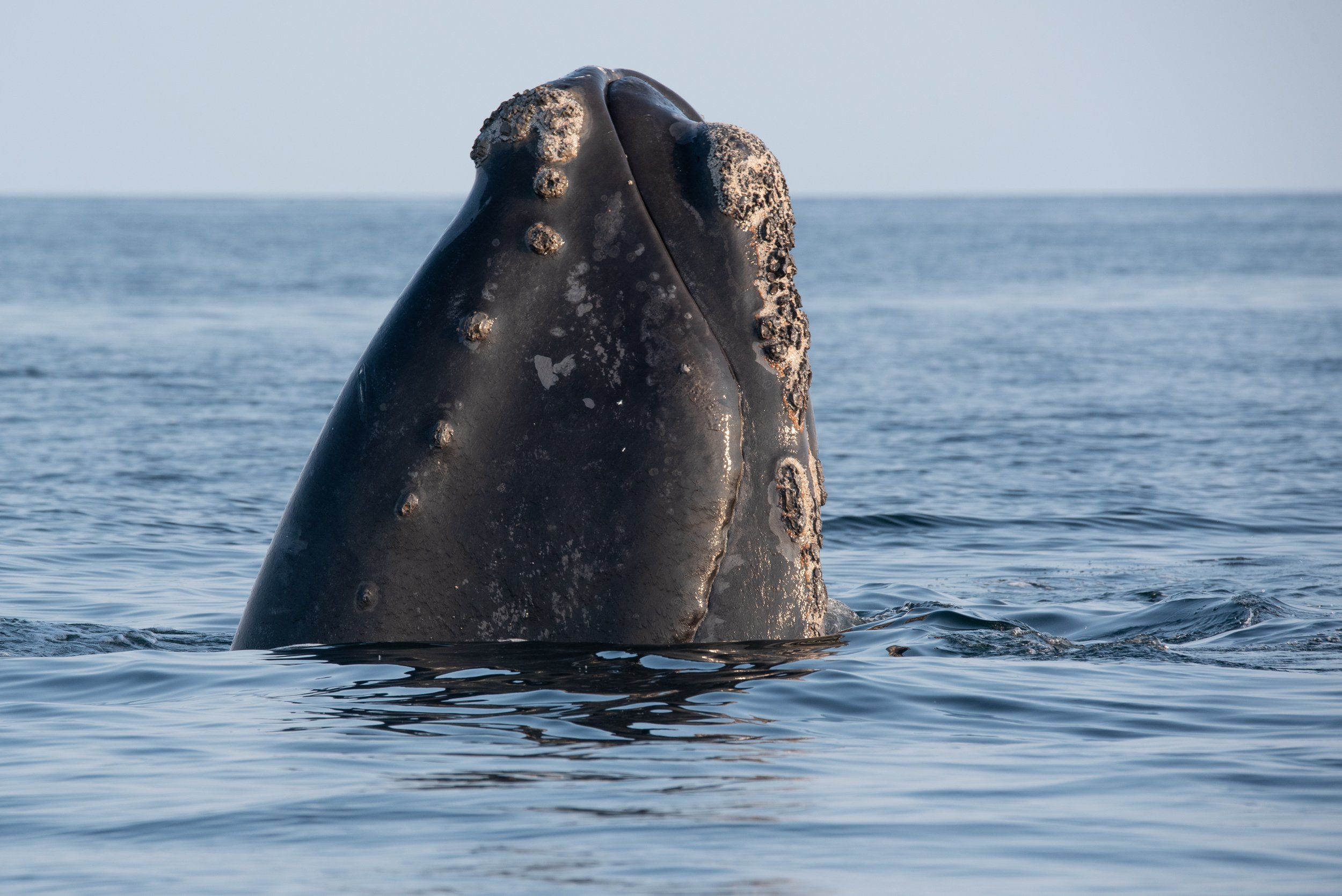
The head of a North Atlantic right whale (Eubalaena glacialis) emerges from the waters of the Gulf of Saint Lawrence, Canada.
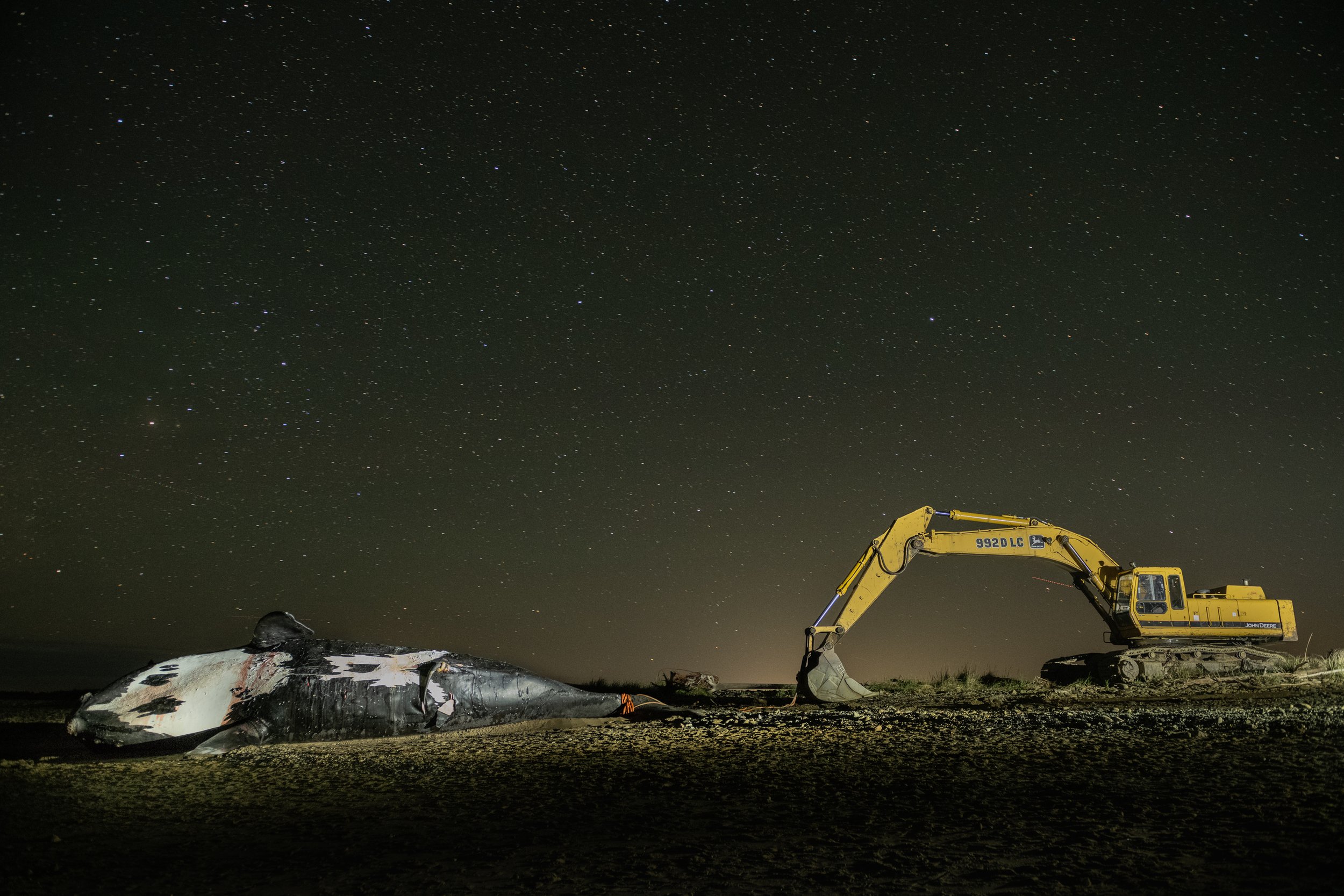
Wolverine, a North Atlantic right whale, was known by scientists for three long scars incised on his back by a boat’s propeller. Since that first ship encounter when he was a calf, Wolverine survived three known entanglements in fishing gear. In June 2019 his body was found floating in the Gulf of Saint Lawrence. Towed from sea, then pulled ashore, he here awaits necropsy on Miscou Island, N.B. There are around 400 North Atlantic right whales remaining, and they’re dying by ship strike and fishing gear entanglement faster than they can reproduce. Wolverine’s body will provide researchers with abundant data—vital for protecting remaining right whales.
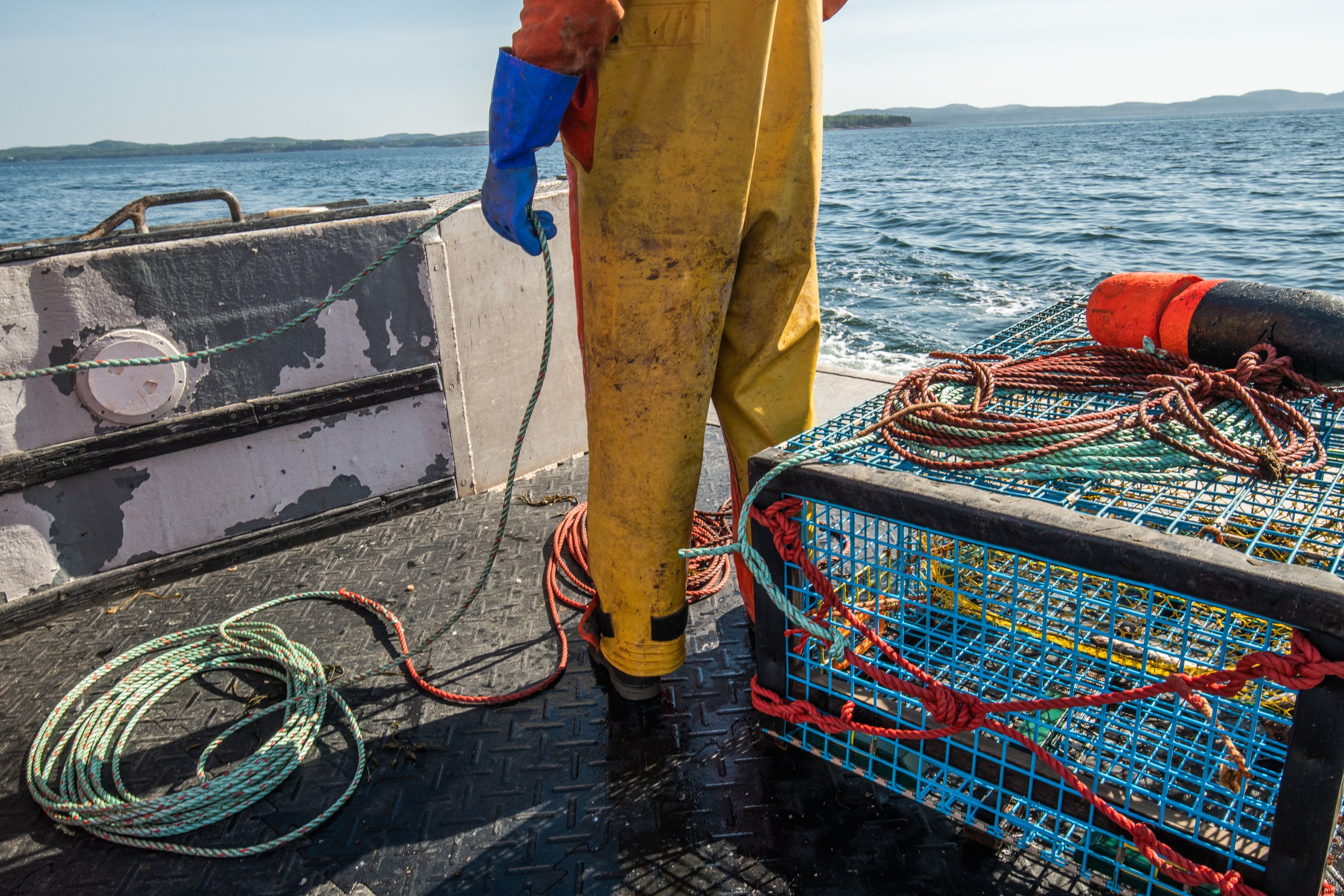
A lobster fisherman prepares to set a trap in the Bay of Fundy in New Brunswick, Canada. The ropes from trap and pot fisheries pose a serious threat to North Atlantic right whales.
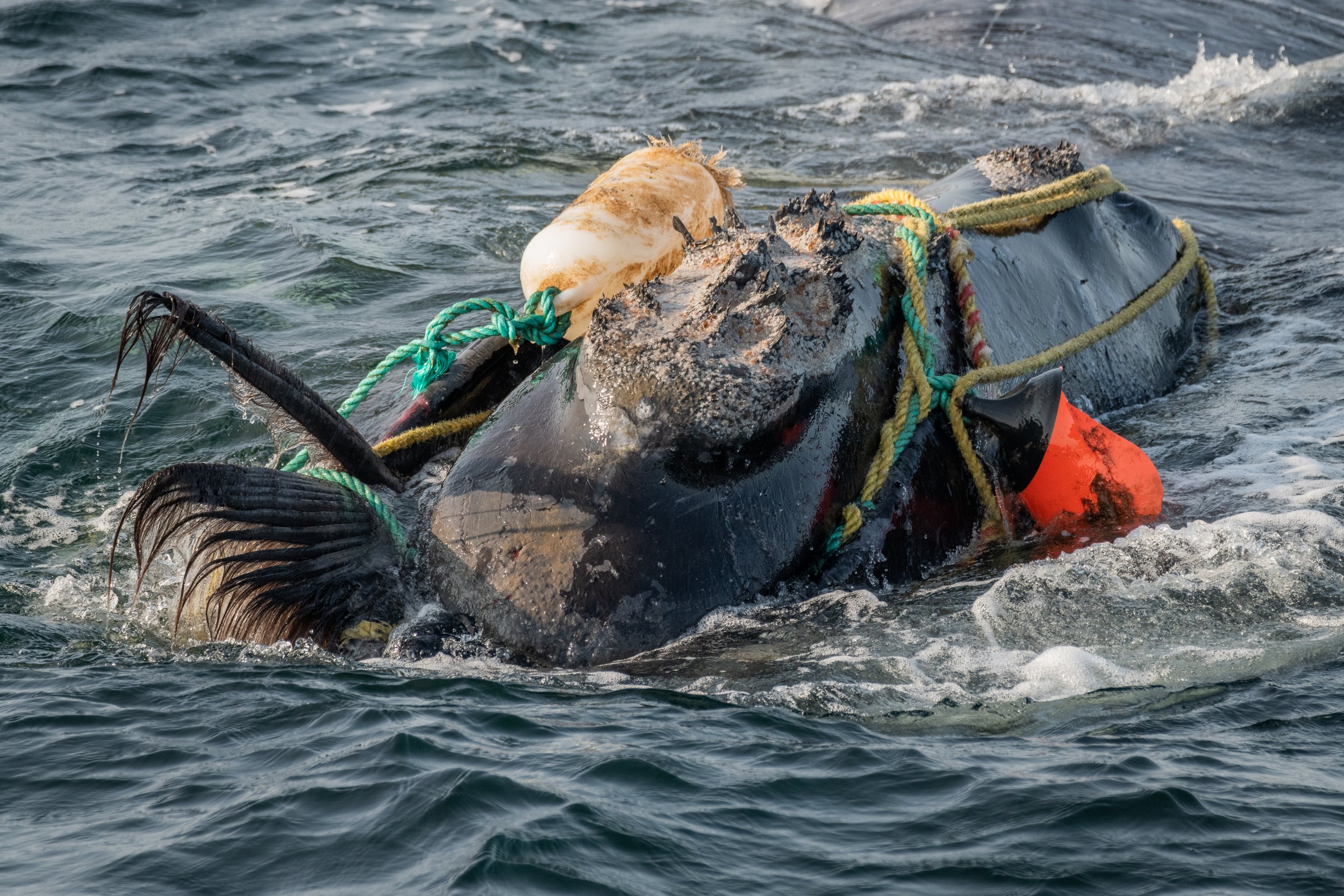
Fishing ropes wrap around the head and mouth, damaging the baleen of a severely entangled North Atlantic right whale (Eubalaena glacialis) in the Gulf of Saint Lawrence, Canada. Fishing gear entanglement is a leading cause of death in North Atlantic right whales.
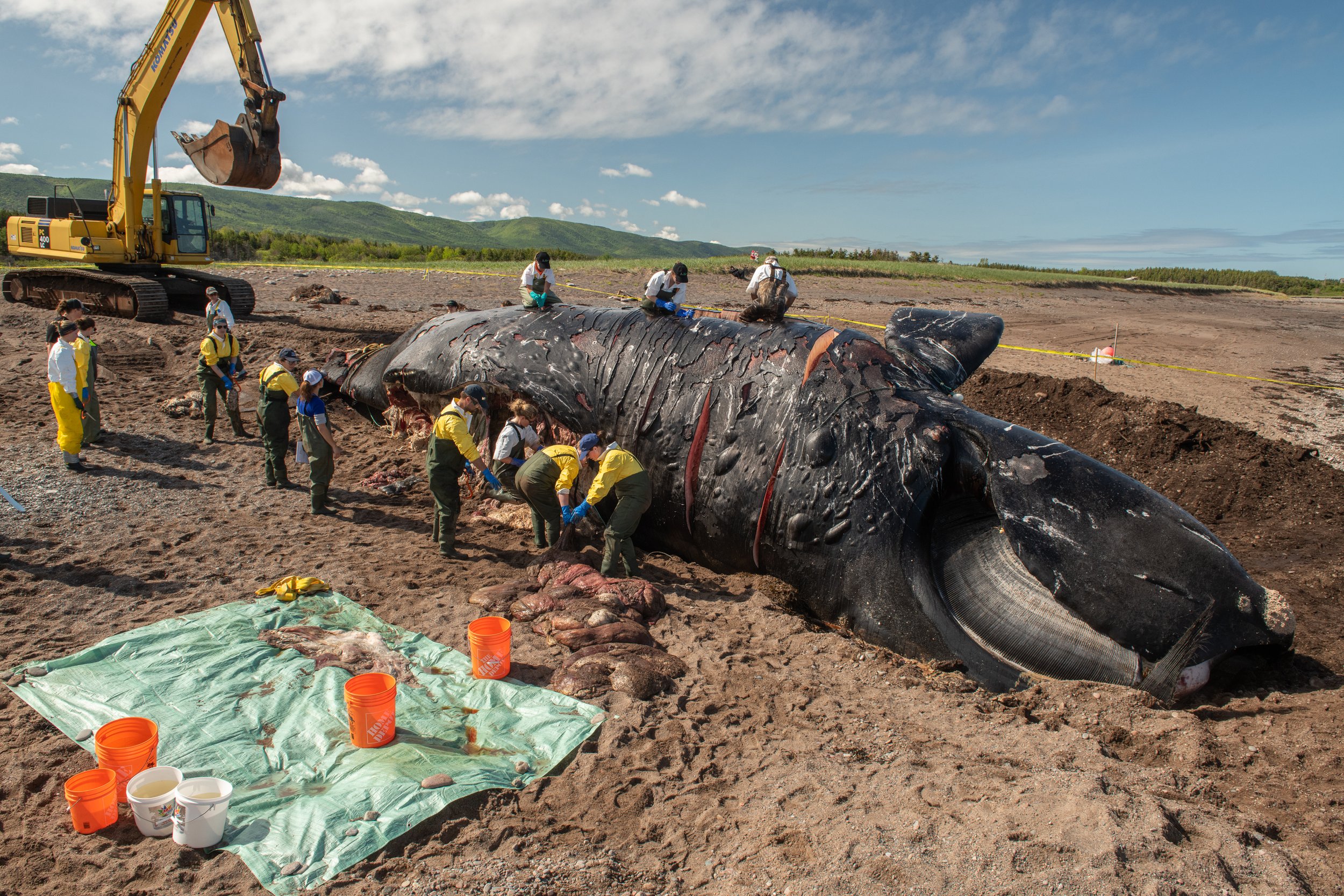
Researchers perform a necropsy on a dead North Atlantic right whale (Eubalaena glacialis) on a beach in Cape Breton, Canada. The whale, known as "Punctuation" to researchers, was a large female who scientists have been tracking since she was first spotted in 1981. Findings of the necropsy revealed the whales fatal injuries were due to "sharp trauma," consistent with a vessel strike.
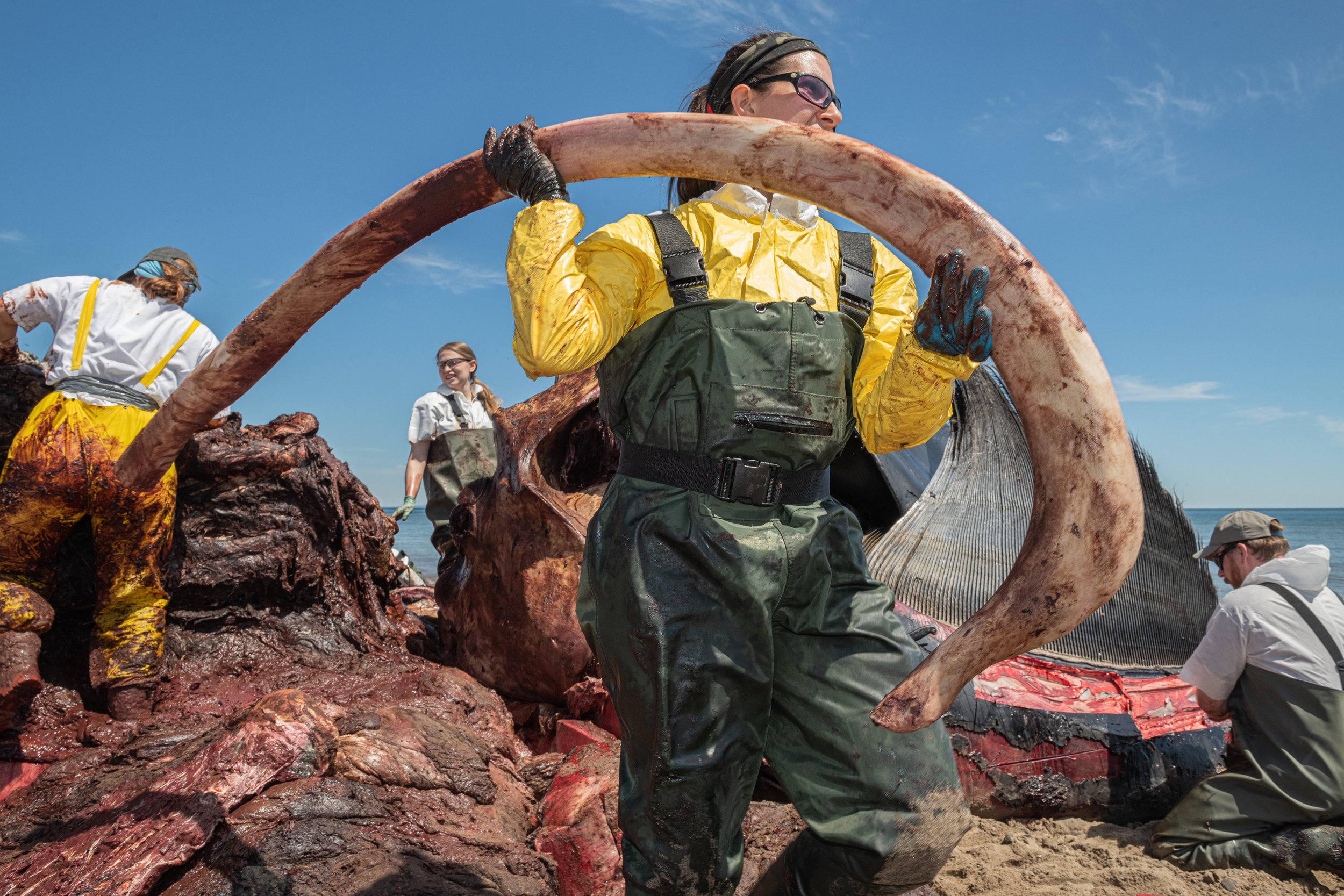
A researcher removes a rib from the body of 11 year old North Atlantic right whale right whale, "Wolverine". Bones will be investiagted for fractures and breaks that could indicate blunt force trauma consistant with a ship strike. Miscou Island, New Brunswick, Canada.
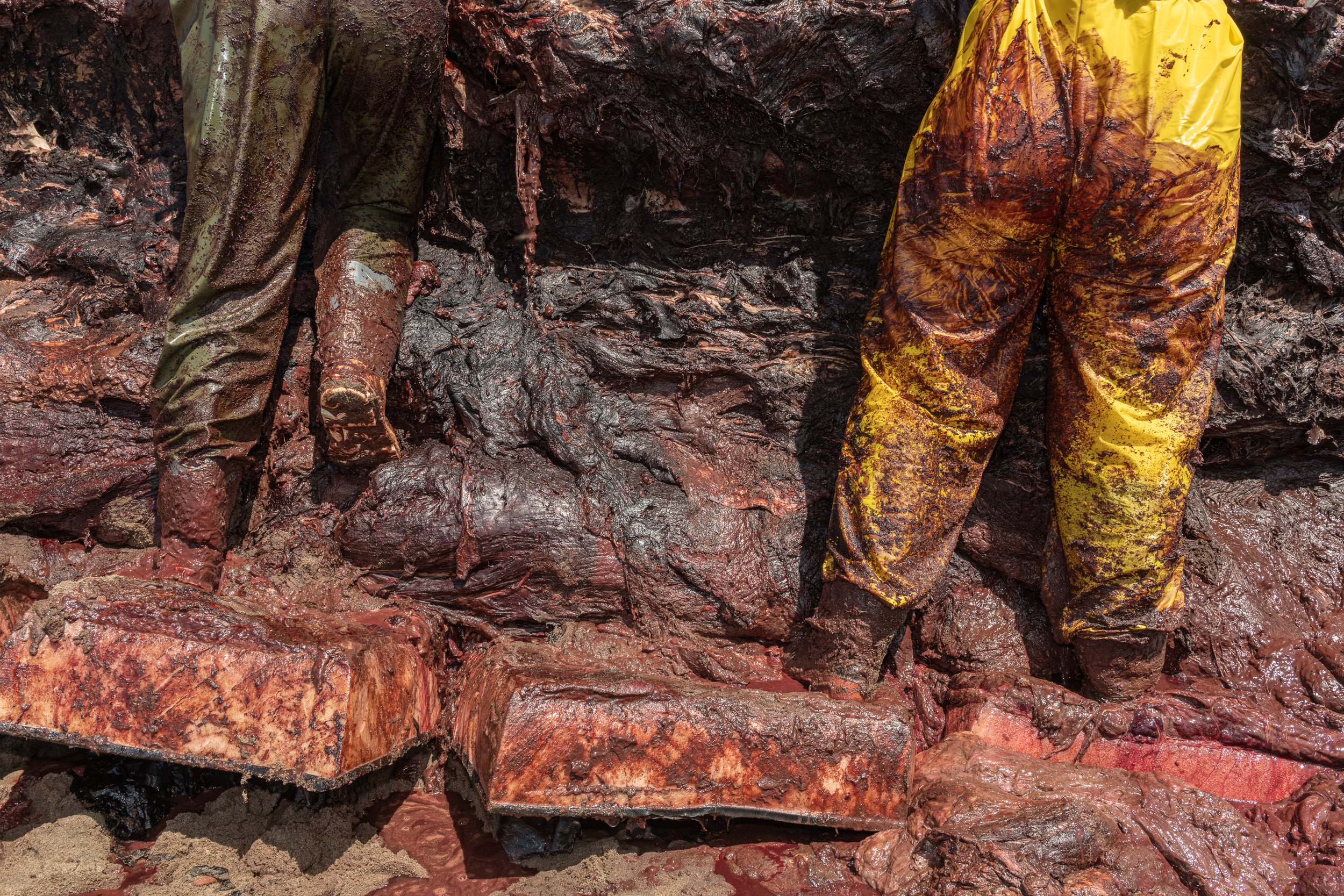
Researchers stand in the body of North Atlantic right whale "Wolverine" while conducting his necropsy on Miscou Island, New Brunswick, Canada.
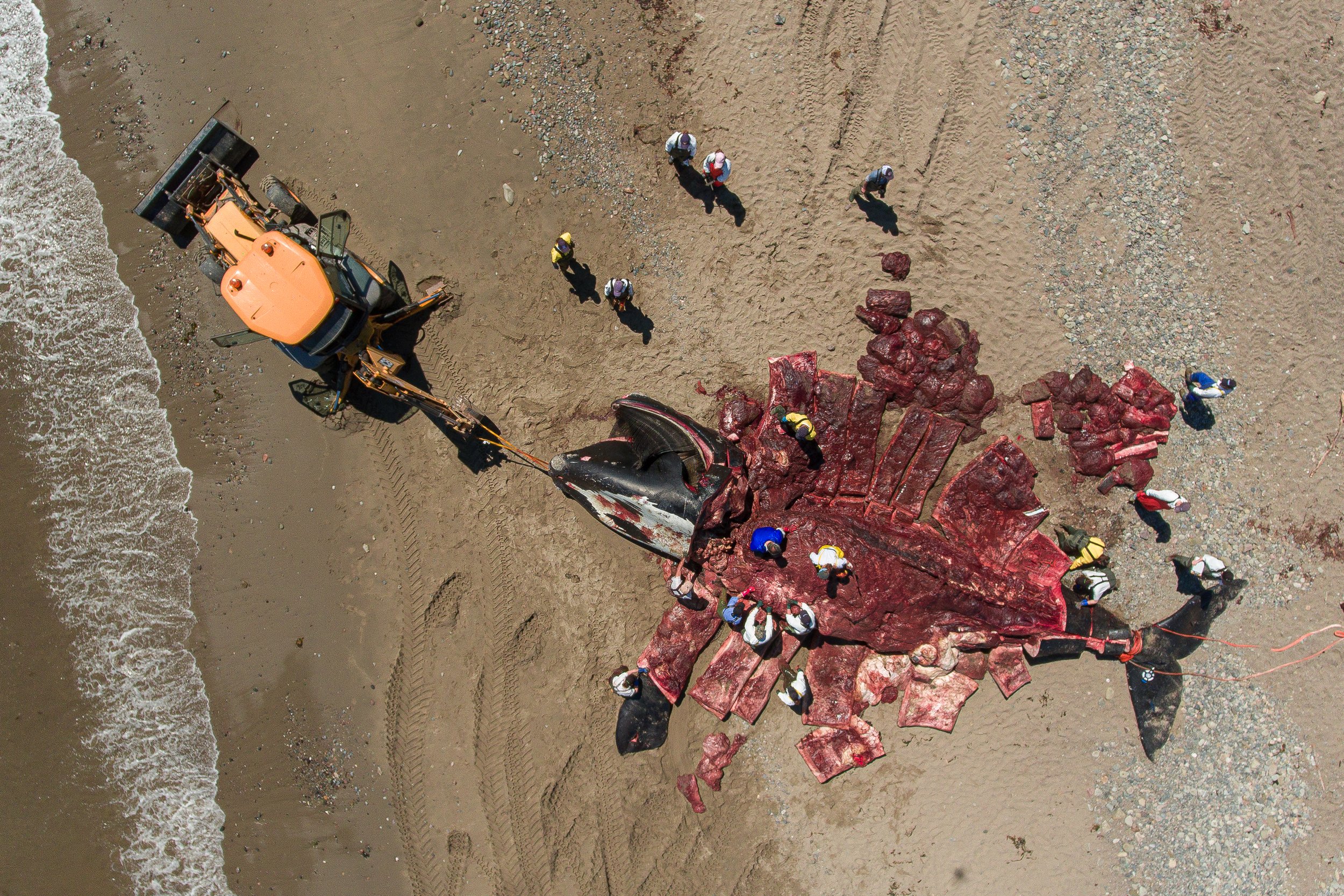
The body of North Atlantic right whale "Wolverine" is flensed during a necropsy conducted by a team of more than two-dozen, including biologists, veterinary pathologists and veterinary technicians, on Miscou Island, New Brunswick, Canada.
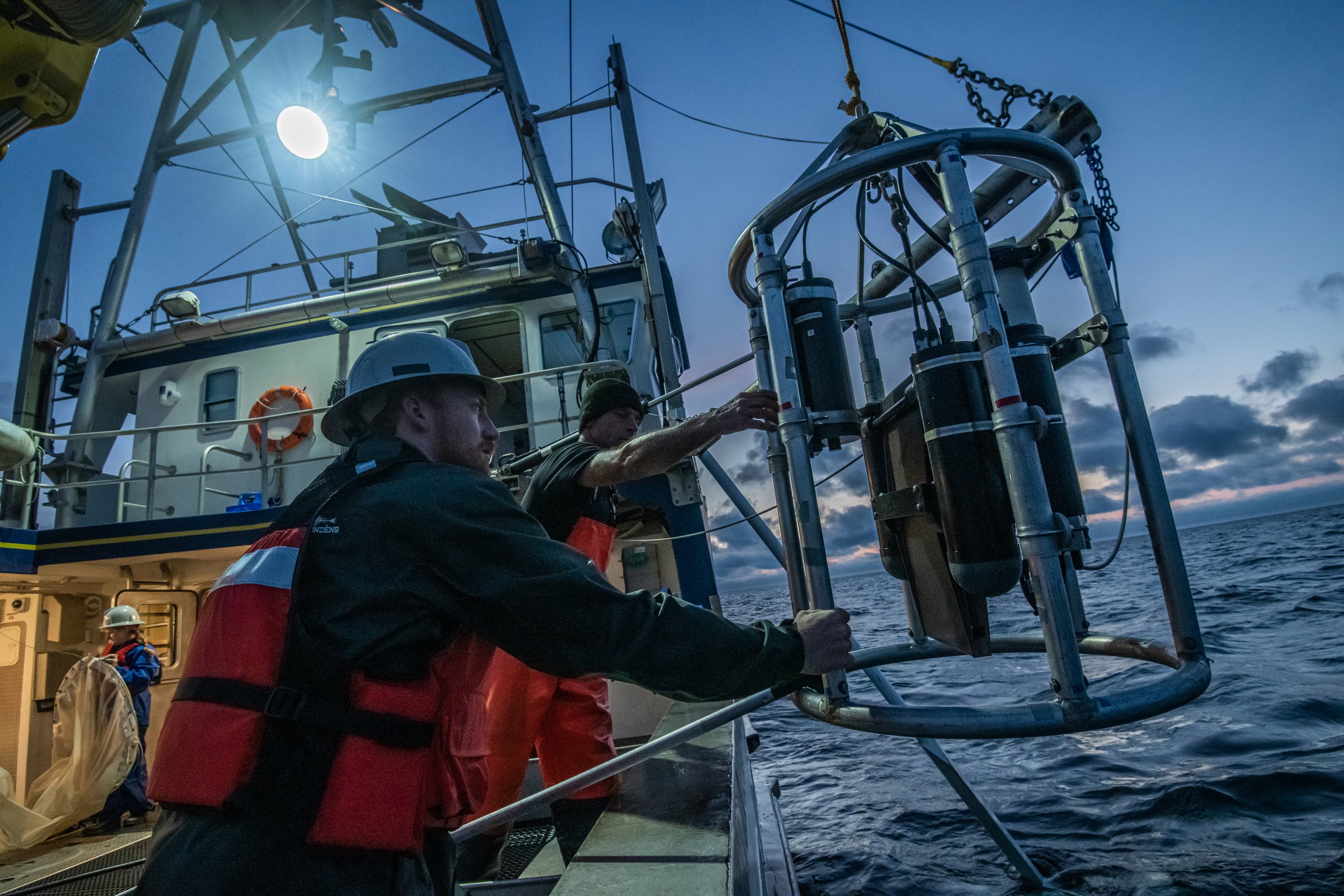
Hansen Johnson from Dalhousie university, assisted by a snow crab fisherman, lowers an optical plankton counter into the Gulf of Saint Lawrence. The optical plankton counter measures the size and density of plankton through the water column. Understanding more about the food source of right whales is key to their protection.

Samuel Mongrain, a survey technician with Fisheries and Oceans Canada, gazes out the specially modified window of a Twin Otter airplane. His team gathers vital data on right whale locations to inform management decisions on shipping and fishing activities.

The Ocean Tracking Network (OTN) deploys an autonomous glider off Halifax, Nova Scotia. The gliders provide oceanographic data and record the presence of right whales by listening for their vocalizations. This information helps researchers to understand changing oceanic conditions and whale behaviours.